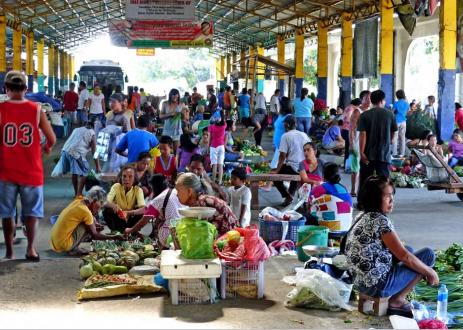The Great Balancing Act
Creating a Sustainable Food Future, Installment One

概要
How can the world adequately feed more than 9 billion people by 2050 in a manner that advances economic development and reduces pressure on the environment? This is one of the paramount questions the world faces over the next four decades. “The Great Balancing Act” seeks to start answering this question by exploring the scope of the challenge and proposing a menu of potential solutions. This working paper is the first in a series that forms the foundation of the "World Resources Report 2013-14: Creating a Sustainable Food Future."
Executive Summary
How can the world feed more than 9 billion people by 2050 in a manner that advances economic development and reduces pressure on the environment? This is one of the paramount questions the world faces over the next four decades.
Answering it requires a “great balancing act” of three needs—each of which must be met simultaneously.
First, the world needs to close the gap between the amount of food available today and the amount required in 2050. According to new WRI analysis, we’ll need about 60 percent more food calories in 2050 than in 2006 if global demand continues on its current trajectory. This gap is in part a function of increasing population and wealth. The United Nations projects that the global population will likely grow from 7 billion in 2012 to 9.3 billion by 2050. At least 3 billion more people are likely to enter the global middle class by 2030, and they will almost certainly demand more resource-intensive foods like meat and vegetable oils. At the same time, approximately 870 million of the world's poorest people remain undernourished even today.
Second, the world needs agriculture to contribute to inclusive economic and social development. Agriculture employs more than 2 billion people around the world—more than 28 percent of the global population. And according to the World Bank, growth in the agricultural sector can reduce poverty more effectively than growth arising from other economic sectors. We need a strong agricultural sector if the world is to develop in a way that reduces poverty, alleviates hunger, generates revenue and jobs, and benefits women.
Third, the world needs to reduce agriculture’s impact on the environment. For instance, agriculture was responsible for approximately 24 percent of global greenhouse gas emissions in 2010 and therefore contributes to climate change. Agriculture is the dominant driver of tropical deforestation. Furthermore, agriculture accounts for about 70 percent of all the freshwater withdrawn from rivers, lakes, and aquifers.
没有银子来完成出色的平衡行为。但是有潜在的解决方案。有效地结合在一起,这些解决方案可能会缩小食物差距,有助于全球发展,并减少食物的环境影响。
在The Great Balancing Act,我们提出了这些潜在解决方案的“菜单”。一些菜单项减少了预计的消费增长,例如减少粮食损失和浪费。其他菜单项增加了食品生产,例如将退化的土地恢复为农业生产力。菜单上的任何物品都无法实现可持续的食品未来,并且在国家和食品连锁店之间,物品的相关性会有所不同。但是,解决方案的结合应有助于养活世界,同时减少贫困,性别平等,生态系统保护,减少温室气体排放和可持续的淡水管理。
The Great Balancing Actis the first in a series of working papers that we’ll roll out over the course of a year. Each subsequent paper will take a detailed look at a potential solution that could help achieve a sustainable food future. These installments will set the foundation for and culminate in theWorld Resources Report 2013-2014: Creating a Sustainable Food Future. To learn more about the series and sign up to receive updates, visit the世界资源报告网站.
Slideshow and Video
观看叙述幻灯片介绍The Great Balancing Act, or查看我们的PowerPoint演示文稿.

